How to Use the Law of Reciprocity in Sales to Win More Deals
Casey O'Connor
The Law of Reciprocity is a well-known psychology principle, perhaps best described by author Robert Cialdini in his famous book Influence: The Psychology of Persuasion. Cialdini describes the human predisposition to feel the need to reciprocate when someone does something kind or otherwise goes out of their way for them.
Salespeople can benefit from understanding the Law of Reciprocity and how to subtly include it in their sales process.
In this article, we’ll go over everything you need to know about this psychological sales tactic, including some specific strategies and real-world examples.
Here’s what we’ll cover:
- What Is the Law of Reciprocity?
- Why Is the Law of Reciprocity Beneficial in Sales?
- How to Use the Law of Reciprocity in Sales
- The Law of Reciprocity Examples
What Is the Law of Reciprocity?
The Law of Reciprocity, described by “Godfather of Influence” Robert Cialdini in his book Influence, is the human tendency to feel obligated to do something in return when someone does something for you first. 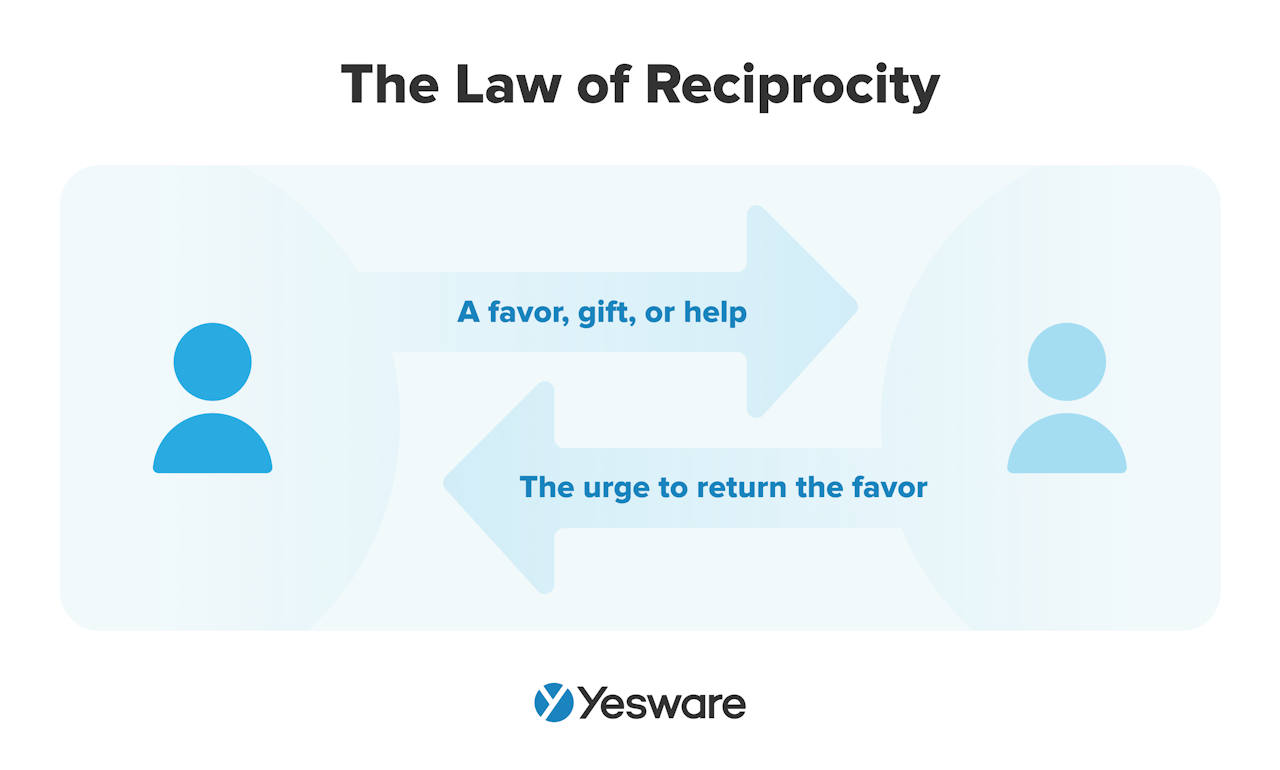 In other words, it’s human nature to feel obligated to reciprocate when someone does something for you.
In other words, it’s human nature to feel obligated to reciprocate when someone does something for you.
Research has shown that this tendency to want to reciprocate holds true across personal and professional settings — including sales.
In fact, reciprocity is one of the most powerful persuasion techniques available to salespeople.
Why Is the Law of Reciprocity Beneficial in Sales?
The Law of Reciprocity is an especially effective sales tactic.
When sales reps keep in mind the Law of Reciprocity, they’ll be looking for opportunities to do something nice or otherwise go out of their way for the prospect.
The hope, of course, is that the prospect will then feel obligated to reciprocate in the form of agreeing to a meeting/demo/free trial/sale/etc.
But, as long as the sales rep plays their cards right, the prospect won’t be privy to that motive — all they’ll see is a salesperson who goes above and beyond to make their experience a positive one.
This attentiveness and consistent value is what today’s buyer looks for in the sales process. A natural by-product of this kind of positive experience is the buyer’s desire to reciprocate by giving you their business in return.
How to Use the Law of Reciprocity in Sales
Fortunately, the number of ways you can use the law of reciprocity in the sales process is virtually limitless. Gestures both big and small can work for this tactic, depending on what sales reps feel most comfortable with and what’s most likely to resonate with the target buyer. 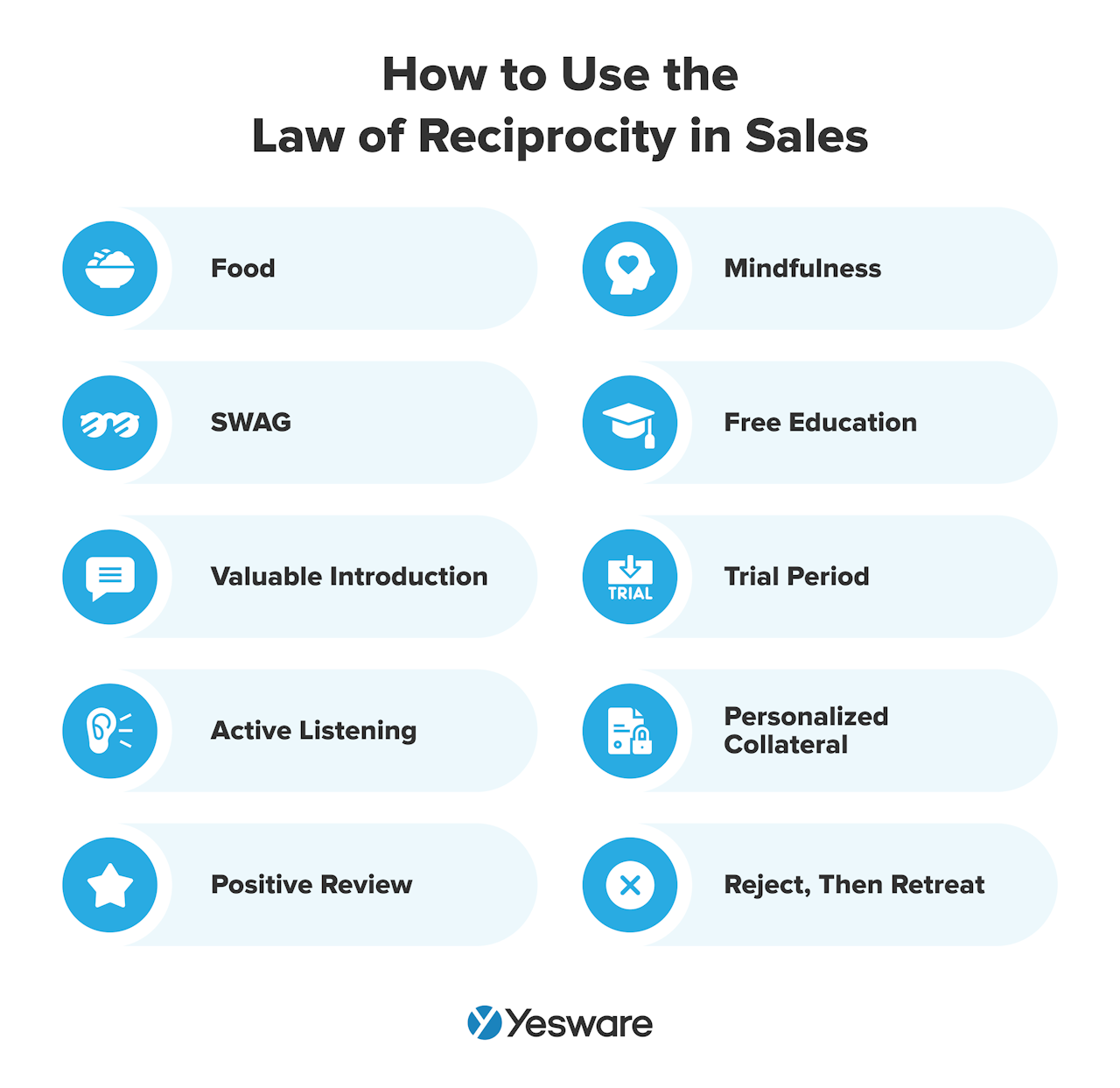 According to Cialdini, the initial gesture itself doesn’t matter as much as the fact that you’re the one to initiate: “Be the first to give and to ensure that what you give is personalized and unexpected.”
According to Cialdini, the initial gesture itself doesn’t matter as much as the fact that you’re the one to initiate: “Be the first to give and to ensure that what you give is personalized and unexpected.”
In other words, to make the Law of Reciprocity work for you throughout the sales process, you need to make sure you’re constantly looking for ways to initiate goodwill. It’s up to you to be proactive and find opportunities to add value.
In general, there are two main types of reciprocation that buyers respond to:
- Emotional reciprocation: acts of goodwill designed to make someone feel good
- Material or financial reciprocation: a gesture of goodwill involving a physical or financial gift/gesture
The specifics of your ideal customer profile and buyer persona profiles will help you determine which types of gestures your target market is most likely to be responsive to. 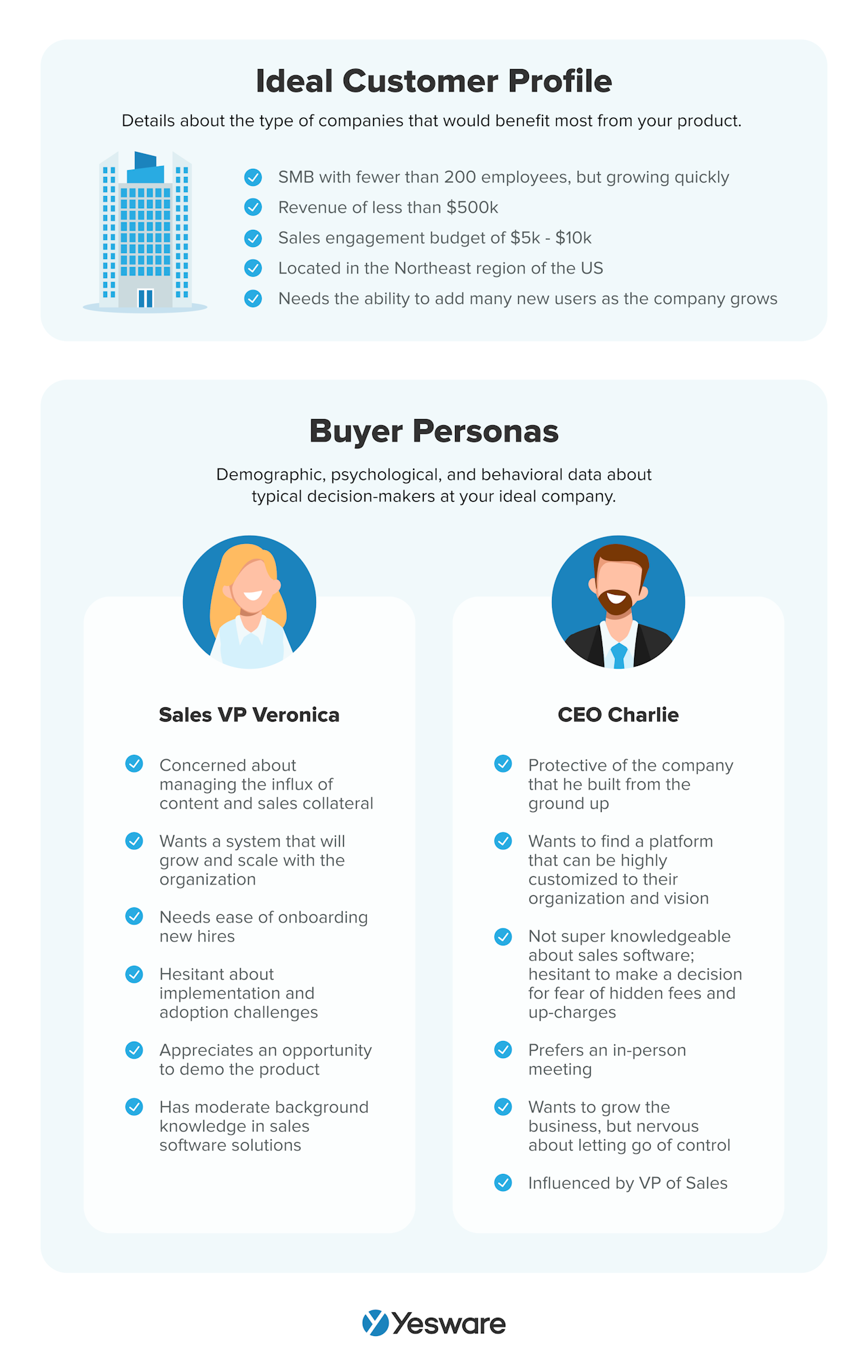 Here are a few of the best ways to use the Law of Reciprocity in sales.
Here are a few of the best ways to use the Law of Reciprocity in sales.
1. Food
You know what they say — the way to many’s hearts is through their stomachs.
One easy way to trigger a feeling of reciprocity in prospects and customers is by offering free food and drink.
This kind of gesture falls on the easier side of the spectrum and can be incorporated into a wide range of sales scenarios. Even a modest coffee station can make a positive impression on prospects when they enter your business.
Don’t sleep on this strategy — it’s backed by data. Research shows that pharmaceutical reps who bring in free lunch when they pitch to doctors’ offices have sponsored drug usage five times higher than those who don’t dish up.
2. SWAG
Another easy-to-generate reciprocity is free samples or other kinds of freebies (commonly known as SWAG, or “stuff we all get”).
SWAG gets a cheesy reputation, but it can actually go a surprisingly long way in drumming up goodwill. One Marketing Science study found that free samples increased sales incrementally over the entire year-long sample period.
Keep tabs on the metrics for this strategy, though, to ensure that the cost of whatever you’re giving away for free doesn’t exceed the return on investment (ROI).
3. Make a Valuable Introduction
You can win some emotional reciprocation by introducing a prospect or colleague as an “expert” in their industry.
This wins points in your favor in the eyes of the listener and makes it more likely that they’ll introduce you in a similarly positive way the next time there’s an opportunity.
At the very least, they’ll feel inclined to maintain a positive interaction after hearing how highly they think of them.
4. Active Listening
Active listening is one of the most important soft skills a salesperson can master. 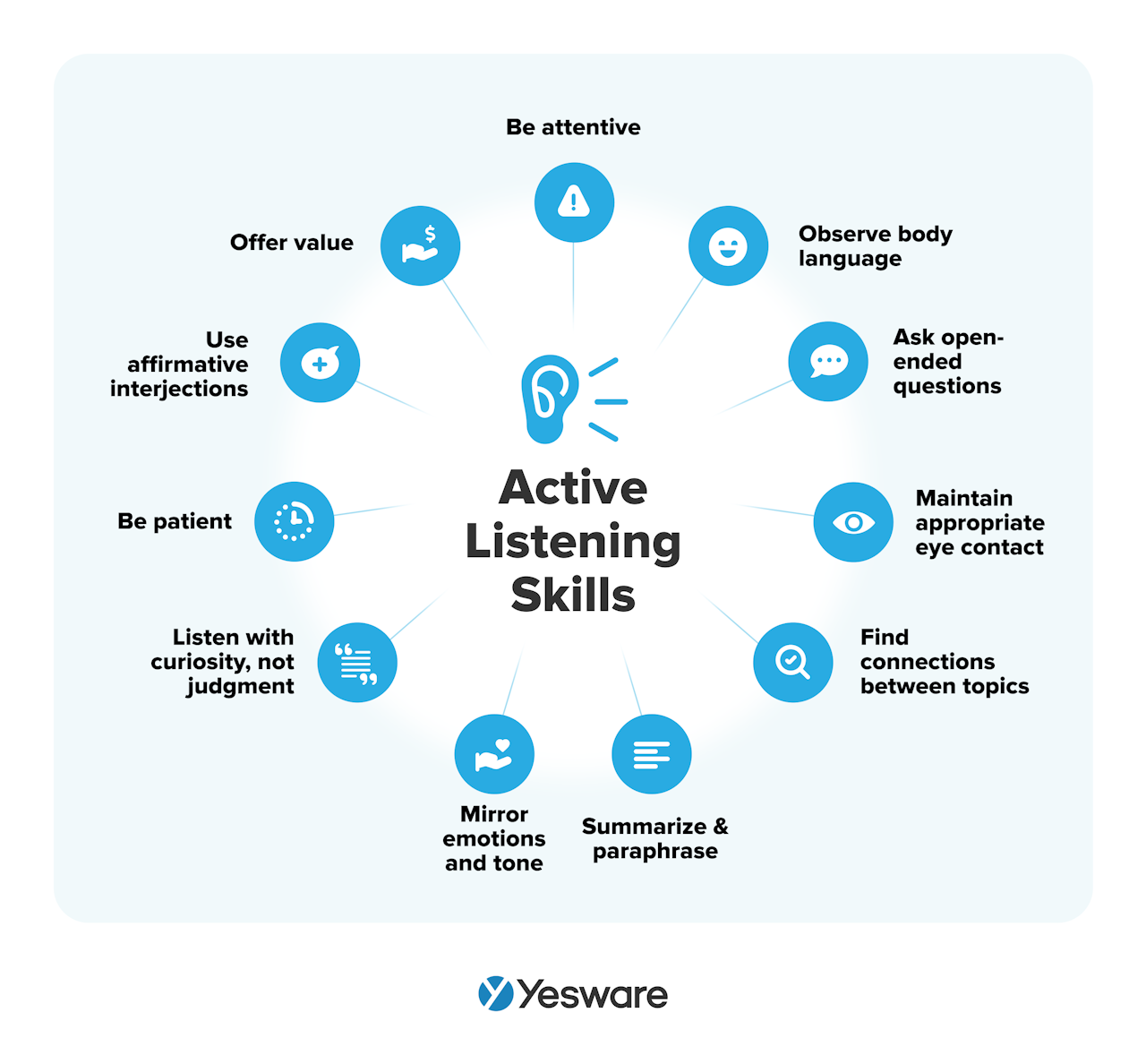 All of the components of active listening lend to positive feelings of reciprocity within a sales conversation.
All of the components of active listening lend to positive feelings of reciprocity within a sales conversation.
If you listen eagerly to a prospect’s needs, they’ll feel obligated to reciprocate that careful attention when you’re explaining the features and benefits of your offer.
If you ask genuine, open-ended questions to better understand a buyer’s needs, they’ll be more likely to ask genuine, open-ended questions about how your product can help. 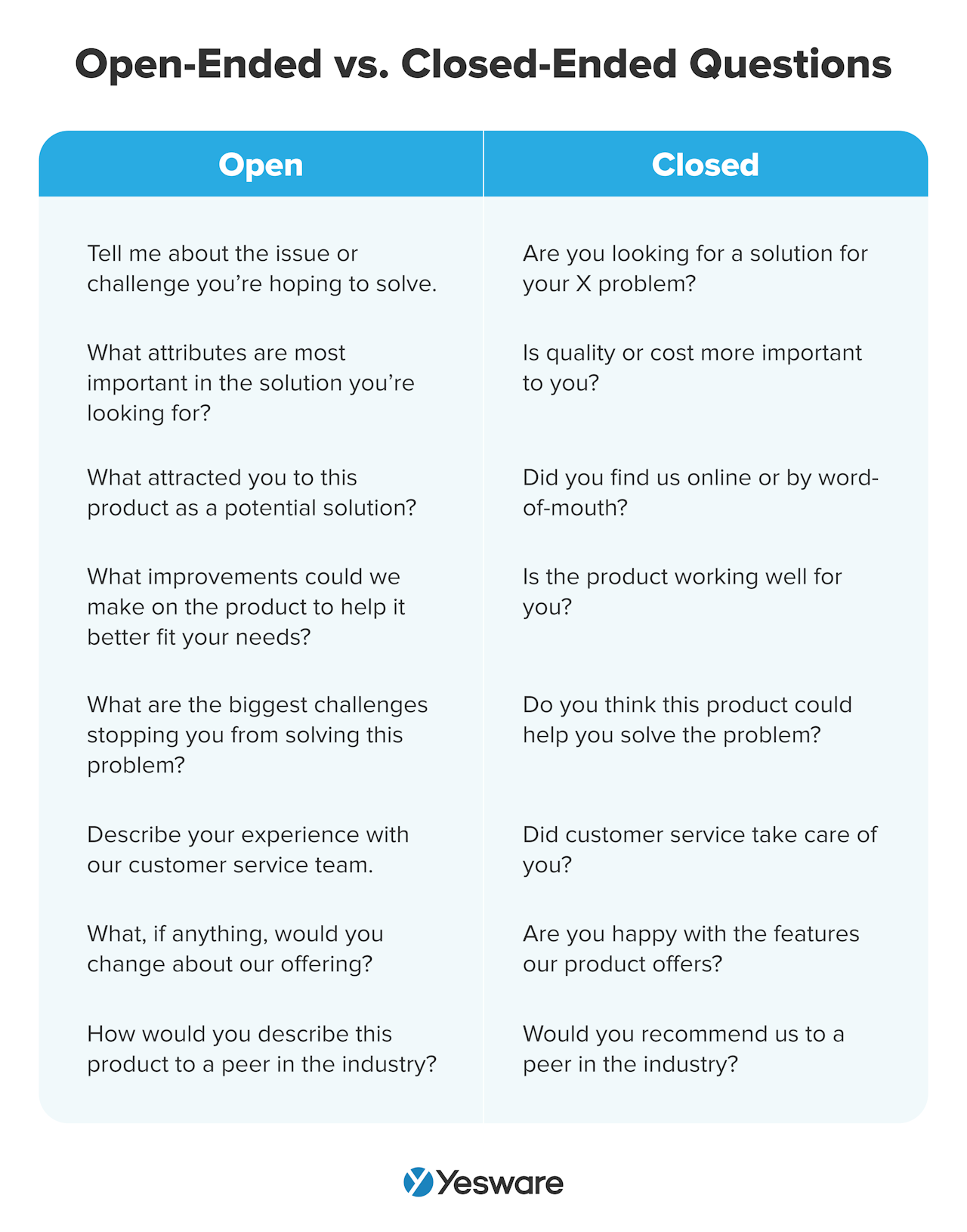 And if you show that you value their responses and opinions through your words, tone, and body language, they’ll be more likely to offer the same empathy and respect to you.
And if you show that you value their responses and opinions through your words, tone, and body language, they’ll be more likely to offer the same empathy and respect to you.
Just like in your personal life, the way you participate in conversations will influence how your counterpart participates in return.
5. Exchange of Good Reviews
Here’s a pretty direct way to invoke the Law of Reciprocity: you and another business whose target market overlaps with yours each post a positive review on one another’s behalf.
This is a pretty clear quid pro quo and not likely one that would be as enthusiastically welcomed by a prospect. But the straightforwardness can be forgiven when the reciprocity is between two businesses and likely to be mutually beneficial.
Just make sure that the shout-outs you each post are genuine and will truly benefit your audience.
6. Mindful of Time
Today’s buyer is busier than ever, and they have no patience for wasting time.
In fact, buyers are anywhere from 57% to 70% done with the buying process by the time they initiate outreach.
In other words, they hold off on reaching out to a sales rep until it’s absolutely necessary.
To that end, make sure you’re abundantly appreciative of the time they choose to give you.
Skilled sales reps know that means going beyond just saying a big thank you (though that’s important too); it’s also about making sure you deliver value at every step, so that the experience is well worth their time.
7. Free Education
Buyers will feel more inclined to buy from you (and customers will feel more inclined to be loyal) if you teach them something relevant at no cost or effort to them.
This is another reciprocity strategy that can take many forms. A blog, for example, is a great way to offer free education that stirs up feelings of reciprocity, especially over time.
You might also consider offering free workshops or training about your product’s features.
Even something as simple as offering insight or giving advice can be educational and can trigger the Law of Reciprocity.
8. Peace of Mind
A lot of buyers are willing to offer concessions or sign a contract more quickly when they know there’s safety in the deal.
A prospect might be more inclined to close, for example, if they know there’s a forgiving return and/or trial period.
You might also offer a warranty or guarantee, or regular check-ups for physical products.
Anything that offers peace of mind for the buyer can make them more likely to reciprocate with trust in your offer.
9. Personalized Sales Collateral
Buyers today expect more personalization than ever.

Impress your buyer by going above and beyond with hyper-personalized sales collateral like custom video presentations or unique buying guides that they can easily share with decision-makers at their company.
10. Reject, Then Retreat
One common psychological hack, sometimes known as “reject then retreat,” can inadvertently trigger the Law of Reciprocity.
In this tactic, the sales rep makes a big ask or highballs the price — the “premium offer.”
The idea here is two-fold. In the best-case scenario, the prospect accepts your premium offer.
In the other case, though, the prospect balks or “rejects” the sales rep.
The sales rep then “retreats” or concedes by giving in to the demands of the buyer (e.g., lowering the price).
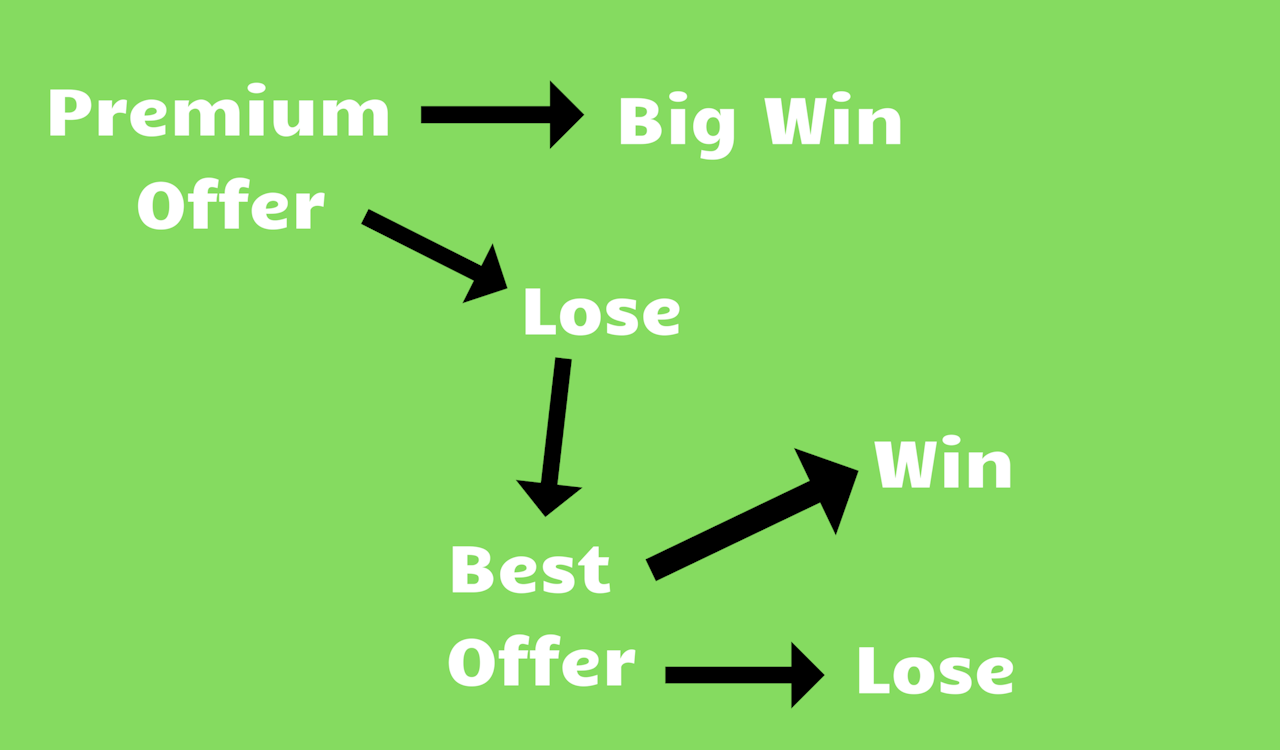
The fact that the sales rep makes a concession can make the buyer feel the need to reciprocate and give something to the rep in return.
One important thing to keep in mind as you practice reciprocity is that the concept is decidedly different from inducing guilt. Making people feel guilty during the sales process is not effective and is unlikely to lead to long-term, profitable customers. The Law of Reciprocity is subtle and ultimately needs to be driven by a true desire to do good.
Tip: Grab more psychology-backed persuasion techniques and tips here:
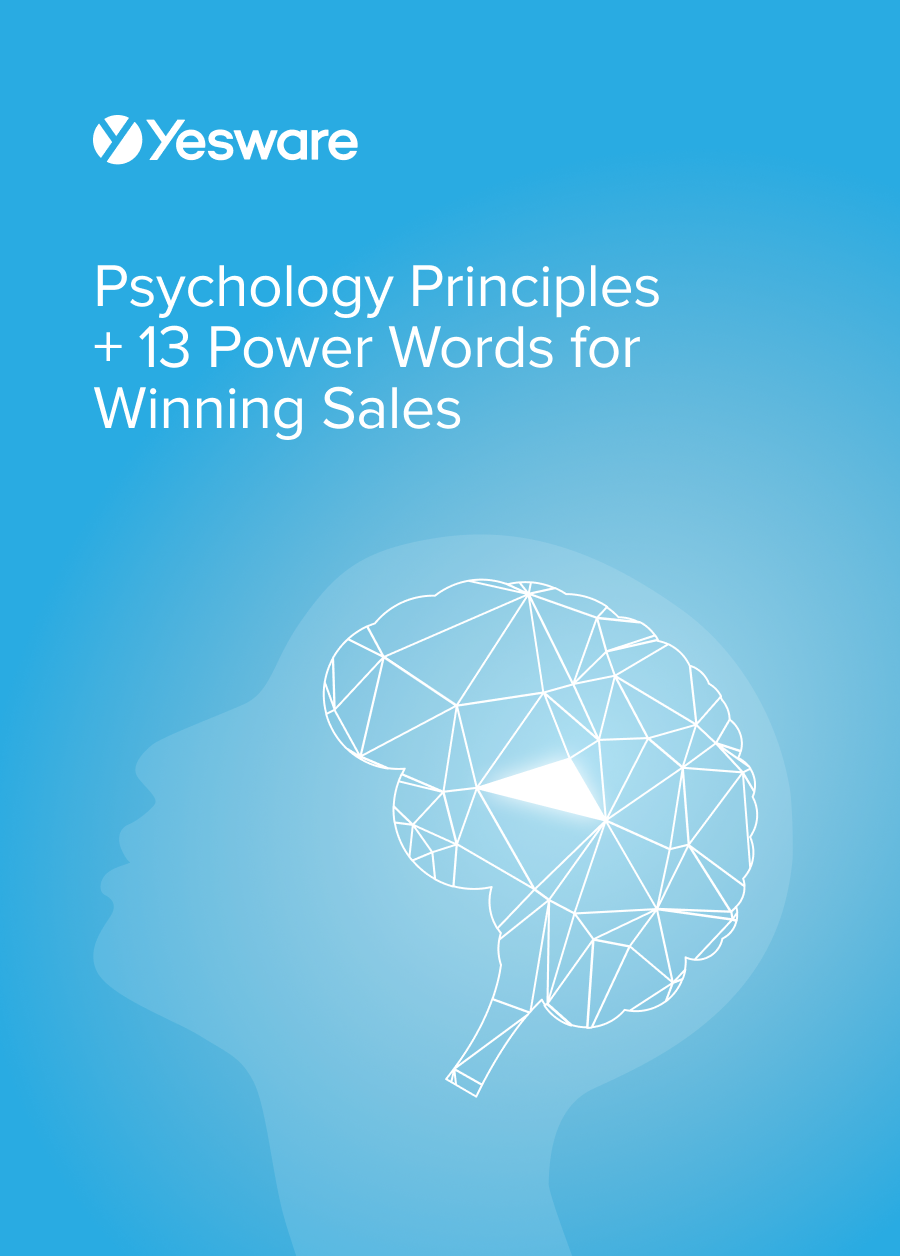 Psychology Principles + 13 Power Words for Winning SalesData-backed psychological principles, nonverbal cues, and persuasive phrases to win more deals.
Psychology Principles + 13 Power Words for Winning SalesData-backed psychological principles, nonverbal cues, and persuasive phrases to win more deals.
The Law of Reciprocity Examples
Here are a few examples of the Law of Reciprocity in action, in both personal and professional circumstances.
Tipping the Bill
A study in the Journal of Applied Social Psychology tested varying levels of reciprocity in an experiment with breath mints.
The control group received their bills with no mints.
Group 1 received their check with a handful of breath mints for the group, but the server made no mention of the mints. She simply put them down with the check. That group increased their tip by about 3% compared to the control group.
For Group 2, the server brought the check and mints and mentioned the mints (“Would anyone like some mints?”). This group tipped better than the control by about 14%.
Finally, with Group 3, the server brought the check, mentioned mints, and then came back a second time a few minutes later and said, “I brought a few more mints, just in case anyone wanted more.” That group had the largest tip, with diners chipping in about 21% over the control group.
The theory here is that the mints triggered the Law of Reciprocity, and the personalization experienced by Group 3 helped kick it into high gear.
Christmas Cards
In the 1970s, Brigham Young University sociologist Philip Kunz did an experiment with Christmas cards.
One holiday season, he sent out nearly 600 Christmas cards to families he didn’t know and tracked how many responses he received. To his shock, despite being total strangers, nearly 20% of his new pen-pals returned the “favor” and sent him a holiday note.
Friends for Lunch
The Law of Reciprocity is at work all around us, every day. Think about the last time you went to lunch with a friend — did you argue over who would pick up the check? Chances are whoever enjoyed a free meal this round will feel obliged to pick up the tab next time.
Free Gifts With Purchase
Many marketing and sales teams offer freebies to customers who purchase or who make a purchase within a certain time frame. When sales reps offer something of value for free, it can make a prospect who may be otherwise on the fence feel obligated to give you their business.
Lead Magnet
Lead magnets are a great example of the Law of Reciprocity in sales. When marketing and sales teams use lead magnets, they offer something highly valuable and relevant to their target buyer in exchange for their contact information.
If the prospect feels that the content within the lead magnet is worth it, they will feel obliged to share their contact information. Make it worth their while by only sending them things that will benefit them, with no expectations or strings attached.
A Dollar in the Mail
One blogger described his experience with an unusual direct marketing campaign. He opened a piece of junk mail to find a customer survey — with a real dollar attached. He took the dollar (because what else was he going to do with it?) and, in turn, felt obligated to fill out the quick survey and return it. The Law of Reciprocity worked!
Can you think of any real-world examples of the Law of Reciprocity in action? Have you ever used it in a sales scenario?
Get sales tips and strategies delivered straight to your inbox.
Yesware will help you generate more sales right from your inbox. Try our Outlook add-on or Gmail Chrome extension for free, forever!
Related Articles
Casey O'Connor
Casey O'Connor
Casey O'Connor
Sales, deal management, and communication tips for your inbox

